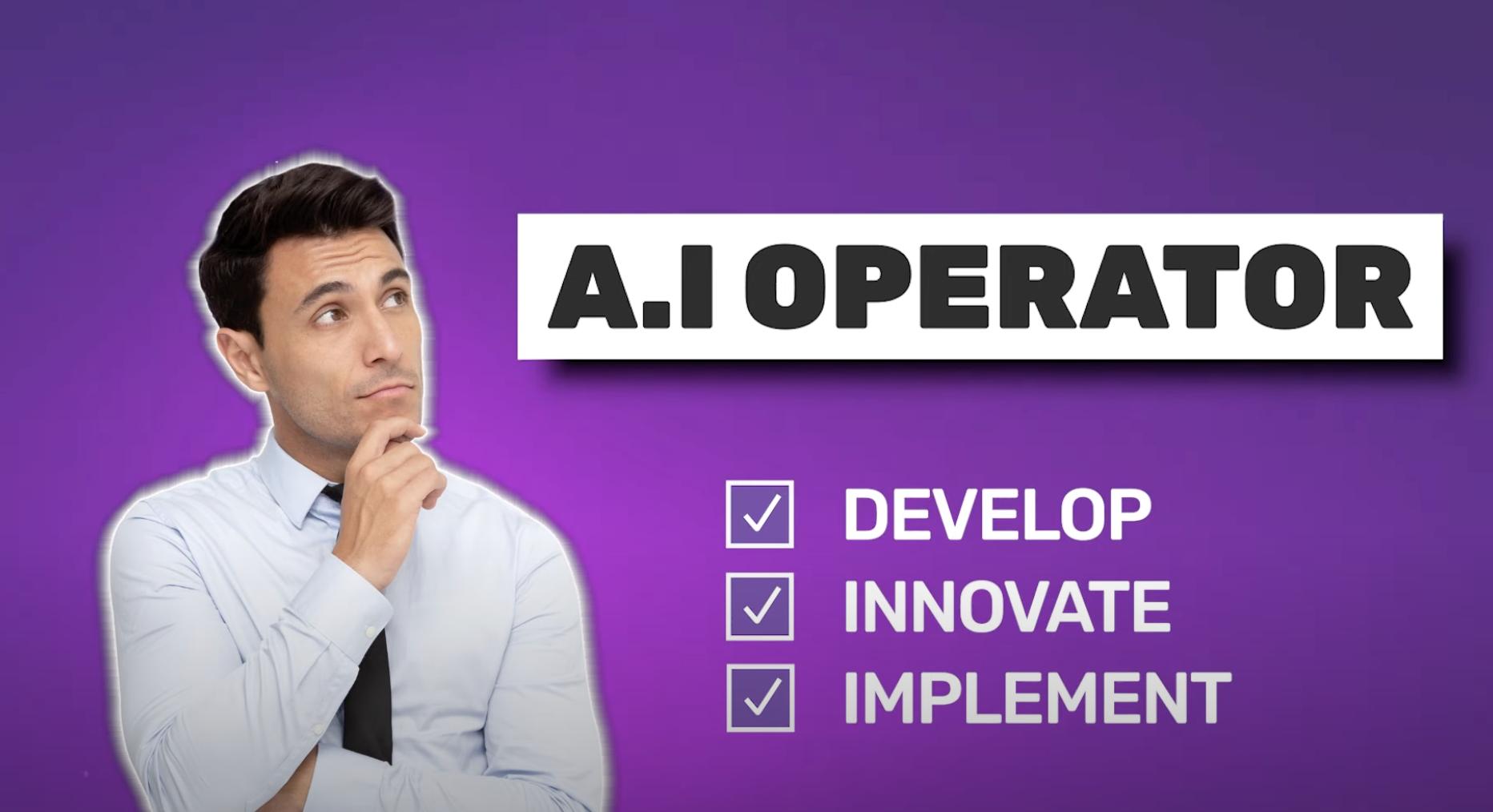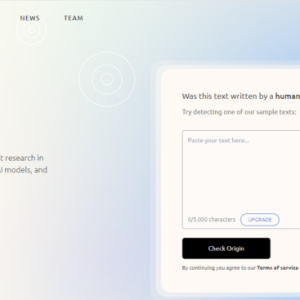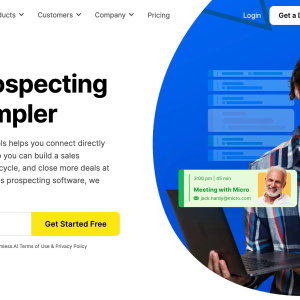Artificial Intelligence (AI) has become an increasingly popular tool in the business world, revolutionizing the way companies operate and make decisions. From improving customer service to optimizing internal processes, AI has the potential to transform businesses in numerous ways. However, implementing AI in a business requires careful planning and strategy to ensure its successful integration. This article explores the various aspects of using AI for your business the right way, providing insights into the benefits, challenges, and best practices for leveraging AI effectively. By understanding the key considerations and taking a strategic approach, businesses can harness the power of AI to drive growth, enhance productivity, and gain a competitive edge in today’s rapidly evolving market.
- ShortlyAI Review: Is It The Best AI Writing Assistant On The Market?
- ChatGPT for Brainstorming: 5 Powerful Ways to Harness AI For New Ideas
- How to Use ChatGPT for Powerful Content Creation (+ Examples!)
- AI Operations Management: The Role Every Business Needs NOW
- How To Use ChatGPT for E-commerce: 10 Ingenious Ideas For Unstoppable Growth
Do you ask yourself how to use AI to get the most out of it? Many businesses have a rather myopic view, thinking solely about how they can use it to generate more content for their marketing needs.
You are viewing: How to Use AI for Your Business the Right Way
AI can write your blog posts, create video scripts and even manage your social media content. But there’s a lot more to AI than just content creation.
The truth is that AI is tragically underused by businesses in organizing and interpreting their own data.
The purpose of this post is to help shed some light on the huge potential that AI can give businesses if they use it beyond just content. By the end, you should have a much better awareness of how to use AI to grow your business.
What AI Is Not
Let’s be clear: Using AI for content generation isn’t necessarily a bad thing, but it’s a bit like using a chainsaw to carve a turkey: It might get the job done, but there are better, more appropriate tools for the task.
Sure, AI can churn out articles and videos at lightning speed, which might save you money or even boost traffic momentarily. But content creation is often not the most significant expense for businesses. Plus, the quality suffers if you solely rely on AI, and your content could eventually be penalized for it.
You ought to take a step back and ponder this: Are you looking at AI from the right angle? Most businesses aren’t platforms like Google or Facebook. For the vast majority, the real power of AI lies not just in automated content creation, but in data analytics and real-time decision-making.
What AI Is Great At: Data Analytics
Let’s face it, data is our best friend and our worst enemy. On one hand, it offers invaluable insights; on the other, it can be a tangled mess. Imagine having a tool that not only sorts through this data but also provides actionable insights. That’s where AI shines.
See more : CopyPro Review: Will It Effectively Automate Your Sales Copy?
A survey by Forrester Research found that while 74% of businesses aim to be data-driven, only 29% succeed at connecting analytics to action. AI can bridge this gap, functioning as a 24/7 analyst who never calls in sick.
Real-Time Analytics
Often, people argue against AI, citing the cost factor. However, according to a study by McKinsey, businesses that have invested in AI have seen an increase of about 30-40% in efficiency on average.
The list of ways that AI can simplify and streamline data assembly and interpretation along with tangible execution is growing daily. How many of these ways is your business using AI?:
- Automated Data Collection: Automatically gather data from various sources, reducing the need for manual data entry and collection.
- Data Cleaning: Identify and correct errors, outliers or inconsistencies in datasets, so that the data is of high quality.
- Data Integration: Merge data from different sources, formats and structures, creating a unified dataset for analysis.
- Pattern Recognition: Quickly identify patterns, trends and anomalies in large datasets that might be difficult for humans to spot.
- Predictive Analytics: Analyze historical data to make predictions about future events or trends.
- Natural Language Processing (NLP): Interpret and analyze textual data, extracting meaningful insights from unstructured text.
- Image and Video Analysis: Through computer vision, AI can analyze visual data, identifying objects, sentiments, and more.
- Real-Time Analysis: Process and analyze data in real-time, providing instant insights and feedback.
- Data Visualization: Automatically generate visual representations of data, like graphs and charts, making it easier for users to understand complex datasets.
- Recommendation Systems: Analyze user behavior and preferences to provide personalized recommendations.
- Dimensionality Reduction: Reduce the complexity of data by identifying the most important features, making it easier to interpret.
- Semantic Analysis: AI can understand the context and meaning behind data, allowing for more nuanced interpretations.
- Optimization: Find the best solutions or outcomes based on the available data, aiding in decision-making processes.
- Simulation and Modeling: Create models to simulate various scenarios, helping in forecasting and planning.
- Customized Reporting: AI can generate reports tailored to specific needs, highlighting the most relevant insights.
So it’s prudent that any business should not only consider using AI for these, and more, reasons, but also think about hiring an AI Operator:

Branches of AI That You Need to Know
Many people lump all of AI into one giant, nebulous category. But AI can actually be divided into three forms:
- Artificial Intelligence (AI): The general form of AI that can perform any intellectual task that a human being can do. We’re not quite there yet, but progress is being made.
- Automated Intelligence: This includes the AI we commonly encounter today, which is focused on automating repetitive tasks.
- Augmented Intelligence: This enhances human decision-making processes by offering informed data-driven options.
These branches are not mutually exclusive and often work best when they collaborate. Imagine automated intelligence compiling the data, augmented intelligence analyzing it, and human intelligence making the final decision — talk about teamwork!
Implementing AI in Your Marketing Strategy
So, how do you bring AI into your marketing game? Let’s break it down:
- Start Small: Don’t try to overhaul your entire system at once. Maybe start with automating social media posts or setting up a chatbot for customer service inquiries.
- Test and Learn: AI is an evolving technology. Before scaling, assess the performance of your current setup. Then, compare how the system adapts to new data and challenges to ensure its reliability and accuracy in real-world scenarios.
- Human-AI Collaboration: Remember, AI is a tool, not a replacement for human skills. A marketing team that knows how to leverage both stands to gain the most.
- Ethical Considerations: As with any technology, there’s an ethical aspect to consider. Make sure your implementation respects privacy laws like GDPR or CCPA, depending on your market.
The Future Is Closer Than You Think
Experts believe that by 2025, AI technology will reach a level where it can perform specific tasks better and faster than human workers, presumably replacing upward of 85 million jobs. While that sounds ominous, it’s actually an opportunity. If machines take over repetitive tasks, we’re freed to focus on strategy and creativity — areas where humans still outperform machines.
At the end of the road, Artificial General Intelligence (AGI) is the aspirational goal of AI:

Often referred to as “strong AI” or “full AI,” AGI represents a form of artificial intelligence that possesses the ability to understand, learn and perform any intellectual task that a human being can, unlike narrow or specialized AI (which is designed to perform a specific task, such as image recognition or playing a game). It will be able to, for example:
- Reason and Problem Solve: It can apply reasoning to solve unfamiliar problems, make judgments in ambiguous situations, and even possess creativity.
- Learn from Experience: Just like humans, AGI can learn from past experiences, generalize that knowledge and apply it to new situations.
- Possess Common Sense: AGI would have a general understanding of the world, much like humans do, allowing it to make decisions based on common sense.
While we’re not at AGI yet, it’s an exciting area of research. At its heart, AGI aims to create systems that can learn, reason, solve problems and understand natural language as well as any human.
Although AGI is still theoretical, some projects hint at its future utility. Google’s DeepMind, for instance, is tackling complex problems from climate modeling to protein folding. Can you imagine the day when AGI crafts your entire marketing strategy from scratch? Dream big because that future might not be as distant as we think.
Last Word on How to Use AI
AI is not the future, it’s the present. So if you’re not already using it in your business beyond chatbots and content generators, you’re missing out on a plethora of opportunities.
The potential for AI in analytics is enormous and largely untapped. Real-time analytics, data sorting and actionable insights are just a few avenues where AI can revolutionize your marketing strategies.
So, why wait? Dive in, start small, and scale as you learn.
For more insights and lessons about marketing, check out our Marketing School podcast on YouTube.
That’s a wrap on “How to Use AI for Your Business the Right Way” We hope you’ve found a trove of useful insights and fresh perspectives. Your opinions and ideas matter to us—join the conversation below and share your take! Hungry for more tech insights? Dive into our diverse collection of articles where innovation meets practicality. Discover More AI Softwares.
Stay in the loop with the latest in AI and tech – your journey into the digital future continues at duanetoops.com.
#Business
Source: https://duanetoops.com
Category: AI





